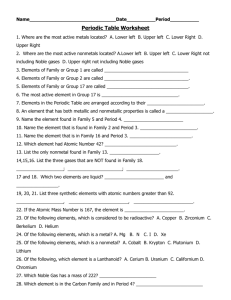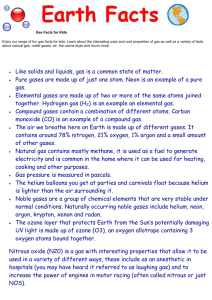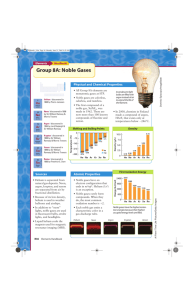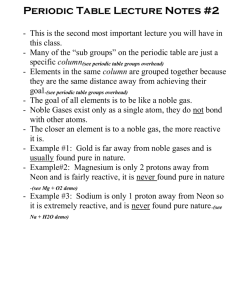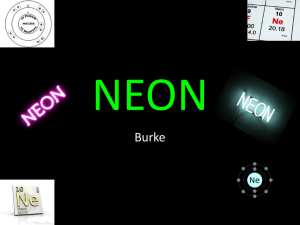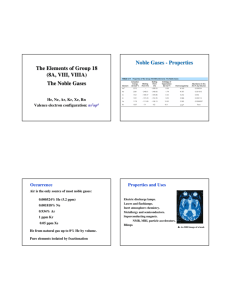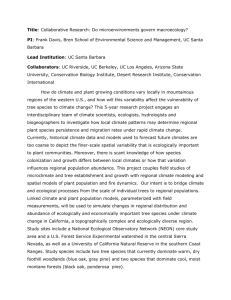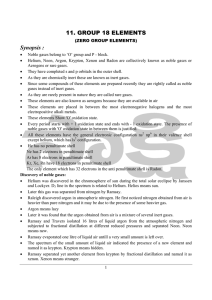Noble Gases
advertisement
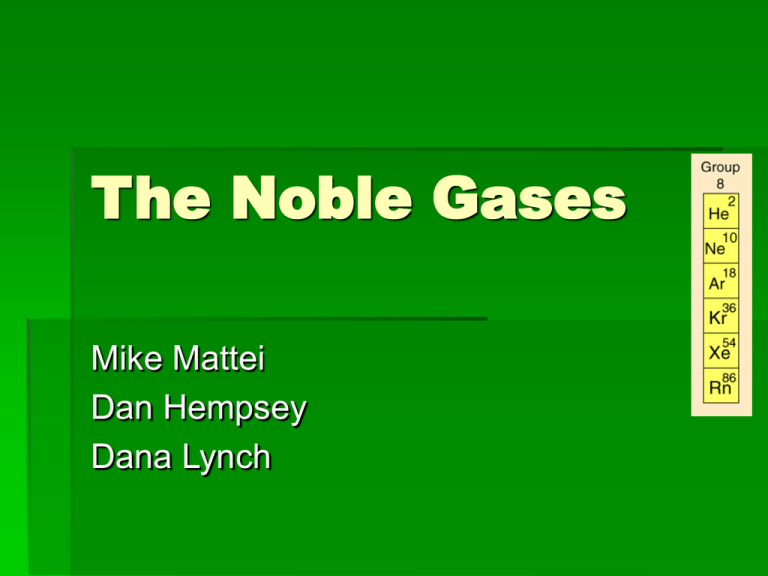
The Noble Gases Mike Mattei Dan Hempsey Dana Lynch Group 18 Known as “The Noble Gases” The unreactive elements: Helium, neon, argon, krypton, xenon and radon Exist as single atoms instead of diatomic molecules Rarely combine with other elements Helium HE Colorless Oderless Tasteless Non toxic Most abundant gas in the universe atomic #2 Helium remains liquid until absolute zero Divers and other people working under pressure use a mixture of helium and oxygen used for filling balloons and blimps. Manhattan Project scientists used helium to make the atomic bomb mixed with oxygen, in asthma treatment because it diffuses very easily through the lungs Neon NE • • Sir William Ramsay discovered neon shortly after the element krypton in 1898. highly inert forms no known compounds Largest use for neon is in advertising signs All noble gases produce a color Helium- yellow Neon- red orange Aragon- violet atomic #10 • • • gives a distinct reddish glow when used in vacuum discharge tubes and neon lamps. Neon and helium together are used to make gas lasers. Functions in high voltage indicators. Argon AR • Greek meaning “inactive” due to it’s inactivity atomic #18 • Discovered in 1894 used to fill incandescent and fluorescent light bulbs to prevent oxygen from corroding the hot filament. • full outer shell makes it stable and resistant to bonding with other elements. forms inert atmospheres for arc welding and growing semiconductor crystals. dating rocks with a process called Potassium-Argon dating Krypton KR Discovered by William Ramsey Greek wording meaning “hidden”. White Inert gas isolated from the air by liquefaction as the other noble gases atomic #36 Illuminate strips at airports Used with nitrogen in fluorescent light bulbs so gases will not burnout. Used in lighting and photography Xenon XE Discovered by William Ramsey is the rarest of the stable noble gases in the air. The first noble gas compound was produced by Neil Bartlett in 1964 xenon, platinum and fluorine. atomic #54 Strobe lights once in photographic flash cubes General anesthetic Radon RN Radioactive gas potential health hazard in some homes Radon is found in underground deposits where it is produced by uranium and radium decay. atomic #86 Uranium decays in rocks and oils Breathing in for a long amount of time can cause cancer
